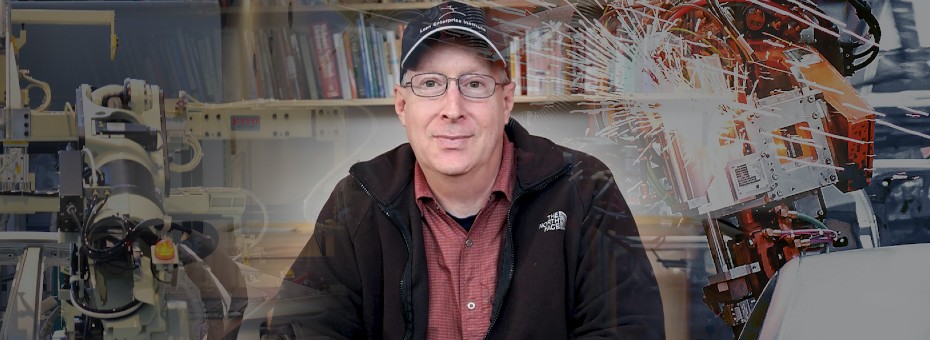Art continues in the second video of a five-part series on situational leadership.
Find the transcript for part two below.
Hi everyone. This is Art Smalley, President of Art of Lean, Incorporated. Today, on behalf of the Lean Enterprise Institute, I have another short video clip for you. We’re going to dig a little bit deeper into the subject of situational leadership.
In a previous video, I shared with you a brief five-minute introduction to the topic of situational leadership. And if you’re interested, I hope you dig in more and take a one-day class or three-day seminar and learn more about the topic. For me, it was very beneficial. In particular, it reminds me of the Toyota Production System and lean thinking very much. It’s not a one-size-fits-all equation, and, in the end, you’re trying to help people, respect people, and make continuous improvement. And in situational leadership, you do that by diagnosing the situation, finding out the needs, and then adapting your leadership style to the needs of the person and the tasks they’re performing. So, let’s dig in a little bit deeper today and go into one of those specific cases, and I’ll share some Toyota examples that I hope will reinforce that point for you.
Organized from the Start
In situational leadership, when a coach diagnoses the situation, they put people in quadrants; they’re called the development levels of D1, D2, D3, and D4. And there’s nothing wrong with being in any of these quadrants. It’s task-specific. So you can be an expert at one thing and a beginner at another throughout your life. You’re not an expert in all things all the time. Nobody is. So you can be an expert at one thing and a beginner at another throughout your life. You’re not an expert in all things all the time. Nobody is.
This first quadrant is called D1: the enthusiastic beginner stage. And I’m sure many of us have felt this feeling or remember feeling this feeling before — when you’re engaged in a new job, a new hobby, or new tasks for the first time, and it excites you. I experienced this last week. I was trying to learn to juggle by watching some YouTube videos from an expert, using some directive techniques on how to improve. And for me, at my beginner level, that was pretty exciting. And there’s nothing wrong. Okay? Beginner levels are expected. You don’t start as an expert in everything.
The D1 bucket category is characterized by people who are new to the task, lacking skills or experience, and you don’t know yet what you don’t know. So, you can’t ask questions. You can’t just simply ask open-ended questions as an instructor and think that’s going to guide the learner because they don’t know what questions to ask yet, but they do have a commitment to learning; they’re eager to learn. They want knowledge from you. They want information. They’re hungry for it. And the quicker you can give it to them, the more appreciative they are, and generally, the faster they’ll improve. And, of course, other external conditions come into play, but that’s why you have to take the full-blown situational leadership course.
When a person is in that D1 quadrant, the situational leadership approach recommends applying what they call the S1 style of instruction.
S1 means giving good directive guidance. It doesn’t mean being a drill sergeant in the military or anything. In fact, it’s quite positive. Supplying good S1 leadership simply means giving high-quality direction, showing and telling, quality repetitions, clarity of five W2 (who, what, when, where, why, how, how much), good examples and definitions, clear goals, roles, and priorities, and actionable feedback. And quite frankly, people want this. They’re very hungry for it, especially in the initial stage when you’re starting to learn things for the first time. It’s a good match of situational needs for the leader and the learner of the task if you can combine these two. Now, let’s look at some Toyota examples and why I say this is very analogous to lean thinking.
The Toyota Way
The Toyota Way: “way” means direction, guidance, route, path, method, ways to do things. You can look in the dictionary here, a variety of definitions for “way,” but they’re all analogous to the term of path, route, means, and things like that. So, the notion of the Toyota Way does mean a “way” or direction. It doesn’t mean the Toyota “un-way” or “random way,” or “leave-it-up-to-you-however-you-want way.” At least not in the beginning. There’s some flexibility for that later on.
The second example from Toyota that I want to bring in is historical, and it’s Taiichi Ohno early in his career. Several of my bosses and mentors had the privilege of working for him for a couple of decades throughout his career. He was not a one-size-fits-all teacher, coach, leader by any means. He changed throughout his career, and it depended upon the person and the task at hand for how he coached. He was very wise in that respect. But make no mistake: early in his career, he was very directive because the situation in Toyota called for that. The company was near bankruptcy; they were a very poor performing company. They had a lot of bad habits, and he needed to fix those. He had to overcome some resistance and obstacles. So he was quite directive. He gave clear directions, clear goals, specific instructions on what he wanted to be done, how he wanted it done, and when he wanted it done. The whole just-in-time system didn’t occur by accident. If he hadn’t guided it and shepherded it through, it wouldn’t have occurred. You know, the whole just-in-time system didn’t occur by accident. If he hadn’t guided it and shepherded it through, it wouldn’t have occurred.
A third example, one that is near and dear to my heart, and I was familiar with the inside of Toyota and after Toyota is the concept of TWI job instruction training. Now it would take a ten-hour course simply to understand TWI job instruction properly, which I recommend you do. But, within it is something called the basic teaching pattern. The basic teaching pattern is designed for teaching people who are new to a task and trying to learn something quickly, safely, correctly, and conscientiously. The trainer follows a very specific pattern to take the learner along that path as rapidly as possible. And it’s a directive. You prepare the learner then present the operation. The trainer explains the steps, the key points, and the reasons why, and the learner then tries that out on their own. It’s called tryout of performance. They do it several times again and eventually recite back the major steps, key points, and reasons why until they’re comfortable. Along the way, the coach corrects things, right? The leader corrects things, fixes small errors, and gets you ready for the next level of performance. The leader corrects things, fixes small errors, and gets you ready for the next level of performance.
It’s not a one-and-done thing. It goes on and on and on. But the reason why I like situational leadership is it’s very much like my experiences at Toyota. It’s not one-size-fits-all. The leaders treat you according to the task, your performance level, your abilities, and the ideas, respect for people and help people to get better results in the shortest time possible.
In this case, in today’s examples, we’re matching D1 and S1 situations together. And of course, you have to take into skill and will and every situation and all externalities. But look, when urgency is involved, safety is involved, quality requirements are involved, in a new training situation, good direction is often the way to go. If you don’t do that, you’ll frustrate learners. If you don’t do that, you’re quite likely to drag out the performance curve longer than it needs to be.
So, I hope that makes sense. In the next video, we’ll move up into the S2 and D2 quadrants, and, of course, one size doesn’t fit all here. I’ll show you some good examples of coaching and how we thought about that at Toyota. I hope that helps today. Stay safe, and see you in the next video.
Investing in Work(ers) Using Job Methods and Job Instruction
Learn how to develop team members for sustained success.






